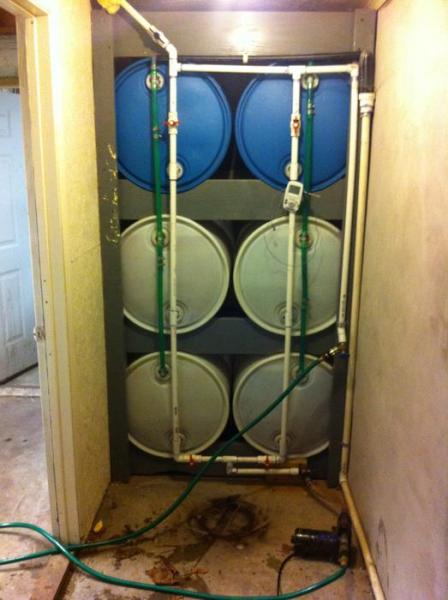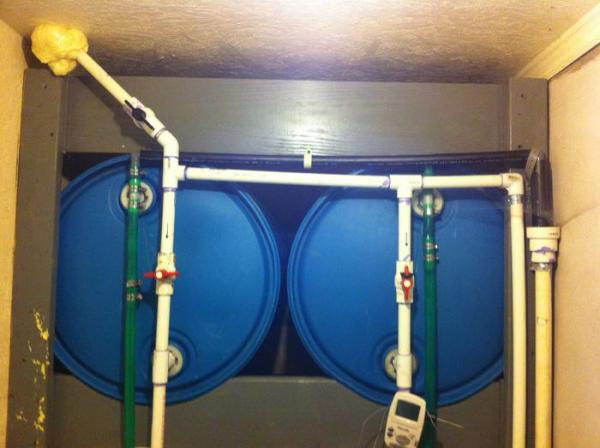
Although I love brewing, I know that it is not the most environmentally-friendly hobby in the world. One of the most obvious of these offenders is the water we waste chilling our boiling wort to pitchable temperatures at the end of a brewday. When I started brewing five gallon batches four-plus years ago, I would try to run the water out of my immersion chiller into 5-gallon buckets to use to clean my gear after the wort was in the fermentor. As I stepped up to ten and then fifteen gallon batches, a new set of issues arose. First, I simply didn't have enough buckets to capture the quantity of water from my (now) plate chiller. Second, I have a shallow well pump on my property. As a result, I would often run out of water of the way through my chill. Not only did this mean I had 100-degree wort in the fermentor but, more importantly, my family would be without water for the next hour or so. As a result, my father-in-law (Len) and I designed my (semi) eco-friendly wort cooling system.

In addition to (or as a result of) my shallow well pump, our water is fairly hard and sediment-rich. As a result, we have a water softener. As many of you know, the water softener in and of itself produces its own share of waste water each week when it recharges and flushes gallons upon gallons of excess brine water into the septic system. It was Len's idea to somehow harness this brine waste water and use it as our cooling water.
We set six 55-gallon plastic barrels up in two 3-barrel bays. Each three-barrel stack is plumbed together to give us about 150 gallons of brine water on demand at a time. The idea is simple: when the water softener recharges, I can either direct the brine water to my septic or to one of the 150-gallon bays in my cooling system. If the selected bay is full, the brine will overflow into my sump pump. At the same time, the other bay is kept completely empty. When it's time to chill the wort, the full bay is pumped through the plate chiller and into the empty bay. In the winter, I can easily get 15 gallons of wort down to under 60 degrees using one pass through the system. In the summer, I usually need two passes through the system to get the wort to about 75 degrees. I then let the wort sit for a few hours in the fermentor in my fermentation freezer until it gets to pitching temperature.
Future ideas include a pre-chiller (I actually have an extra 6-pass cold plate...) and/or insulating the bilco doors just above the water closet. This system works extremely well for me, though. Does anyone do anything similar?




